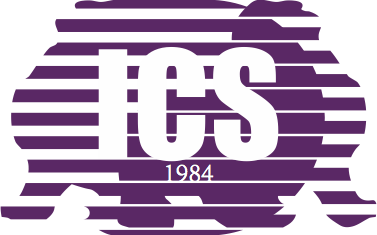在开始做研究之前
Academic Integrity: 剽窃
- Plagiarism occurs when you use another’s words, ideas, assertions, data, or figures and do not acknowledge that you have done so.
- If you use the words, ideas, or phrasing of another person or from published material, you must
- Use quotation marks around the words and cite the source, or paraphrase or summarize acceptably and cite the source.
- If you use charts, graphs, data sets, or numerical information obtained from another person or from published material, you must also cite the source.
- You must always acknowledge your sources by citing them. In this way, you have the right to use another’s creative output by giving that person credit for the work s/he has done.
Benchmarking Crimes
列举在 USENIX 投稿栏目中的 Systems Benchmarking Crimes
- selective benchmarking
- improper handling of benchmark results
- using the wrong benchmarks
- improper comparison of benchmark results
- missing information
开始写作之前……
先考虑好研究贡献
如何理解一份 “研究工作” 的贡献?
- 问题是什么
- 问题/方法的 significance 和 novelty (可能是 difficulty)
- 问题得到解决的证据
Evaluation criteria (ICSE)
- soundness (成立不成立)
- significance (重要不重要)
- novelty (新颖不新颖)
- verifiability (是不是真的)
- presentation (能不能读懂)
了解你最需要考虑的两类读者
- 容易跑偏型 (friendly 的 reviewer)
- 大同行;对你的技术细节并不了解
- 很容易带着他们另一个领域的思维
- 自带 SMT Solver 取反型 (critical 的 reviewer)
- 只要你没有 clarify,读者就会
接受你表述的反面 - 如果你不 argue 问题的重要性,读者就会认为它不重要
- 如果你使用了复杂的方法,需要解释清楚为什么简单的方法不 work
- 只要你没有 clarify,读者就会
研究贡献表达
如果你认为自己的工作有贡献,如何开始?
从已有的东西开始:用得多
- → 💡 提升 XXX 能带来经济效益
- → 💡 出 XXX 问题危害很大
- → 💡 不解决 XXX 就无法实用
从不存在的东西开始:前景好
- → 💡 如果这件事做成,有 XXX 好处
如果全文的方法和实验证据能 defend 你 claim 的故事,论文基本就成功了
- 常见问题:研究问题毫无价值 (
退学)、没有故事、逻辑断裂、证据不足
例子:EXPLODE (OSDI'06; Best Paper)
故事 & 问题:
Storage systems ... have a simple, basic contract: you give them data, they do not lose or corrupt it. Often they store the only copy, making its irrevocable loss almost arbitrarily bad. Unfortunately, their code is exceptionally hard to get right, ...
This paper describes EXPLODE, a system that makes it easy to systematically check real storage systems for errors.
例子:EXPLODE (OSDI'06; Best Paper)
证据:
It found serious bugs in a broad range of real storage systems (without requiring source code): ... We found bugs in every system we checked, 36 bugs in total, typically with little effort.
我们是做 “软件工程” 研究的!
在某个方面改进软件的生产或使用 (usefulness)
请大家考虑一下你的研究工作:
- 你的目标用户是谁?
- 你希望在何种程度改进了他们的软件工程实践?他们为什么要 care about 你的工作?
- 你以怎样的方式证实 (或预计怎样证实) 你的工作是有效的、达到了你 (和用户) 的预期?
以上是一个 “一分钟” 版本的 talk,用于向其他人推销自己 (系里偶遇的老师、开会时遇到的伙伴……) 时使用
全文表达 (Presentation)
表达:目标
让读者能准确、轻松地理解你想表达的内容
- 作为 native speaker,只要能准确读懂,即便行文新手、用词糟糕,也是能容忍的
- 但以下东西是绝对读不下去的
- 逻辑混乱
- 假大空
Important goal: Don’t make readers a hard time in reading your papers! Your technical content is already hard enough.
Concise and Precise
我们在学英语时,经常要求写一个 “不少于 XXX words 的作文”
- 习惯:写不出东西的时候,反复说一些没用的来凑
- 忘记了写作的目的是
准确地表达 (让别人理解)
Vigorous writing is concise. A sentence should contain no unnecessary words, a paragraph no unnecessary sentences, for the same reason that a drawing should have no unnecessary lines and a machine no unnecessary parts. This requires not that the writer make all his sentences short, or that he avoid all detail and treat his subject only in outline, but that every word tell.
—— The Elements of Style
改进全文表达:把握全文的 Logic Flow
全文的逻辑应当是一致、连贯、紧凑的
- introduction 是 abstract 的顺序展开
- 全文是 introduction 的顺序展开
- 段落是 topic sentence 的顺序展开
- 每个句子都承接上句、引导下句
- 读者可以顺着你的逻辑,快速验证行文的合理性
- 我们经常读自己/学生的论文时遇到:逻辑断了
Q: 大家的 research proposal 是按什么顺序写作的?
两种写作方式
Top-down approach
- abstract = introduction 的 topic sentences → introduction → 全文
- Pros: 进度/形式上比较容易把控
- Cons: 如果后续写作时发现更好的表达方式 (常态),可能导致全文大改
Bottom-up approach
- 技术内容和 evaluation (plan) → 缩减成 introduction → 缩减成 abstract
- Pros: 先有技术内容的提炼,通常完成度更好
- Cons: 技术部分的 polish 时间难控制
Zoom In: 句子
基本原则 (1): 消灭语法错误
首先,不要有拼写错误
没有导师/读者愿意看到还有红线的文档
消灭语法错误对 non-native speakers 来说其实相当困难 (对 grammar checker 也是)
- 时态/单复数
- 冠词 (a 和 the)
- that v.s. which?
- 介词 which?
基本原则 (2): 保持逻辑流 (Majumdar and Niksic; POPL'18)
(1) [Topic Sentence] Large-scale distributed systems are difficult to build and test. (2) On top of the non-determinism arising out of concurrent exchange of messages, these systems must account for partial failures, where components or communication can fail along the way and produce incomplete results. (3) Fault-tolerant components are difficult to design and reason about, ...
distributed systems → basic ideas → the hard part
- 虽然有长句 (2),但读起来非常容易:原因 (non-deterministic message exchange) → 后果 (must account for partial failure) → 补充解释 (fail along the way)
Zoom In: 用词
基本原则 (1): Be Precise
每个单词都有它的 embedding
- 这使得英文在科技文献表达时更容易选出最精确的那个词
- 反复磨炼、反复修改,直到你认为非常清楚地完成了表达
含义模糊、过强、offensive、口语化表达等都要避免
- it's → it is; can't → cannot
- since → because (components may become coupled since the adaptation introduces dependency)
- very well → satisfactory, ... (?)
基本原则 (2): Be Consistent
针对同一个术语,坚持使用同一个名字
- 例如 software, program, code 很多时候可以换用
- 但一旦用某个 term 指代某个含义 (比如用 code 表示待分析的代码),就要在全文中执行下去
- 否则会引起读者的疑惑
Zoom In: 标点
(都是细节,就举几个个容易错的例子吧)
括号
以下哪个方式是正确的?
- In EXPLODE[1], ...
- In EXPLODE [1], ...
大家可能会觉得这个论文作者是星际玩家
逗号:Oxford Comma

引号
引号中的标点要非常小心
- I wrote “fixing a mistake.” That's correct in US grammar. Or, “fixing a mistake,” if it were followed by a comma.
- Not in the UK: you'd write “fixing a mistake”.
The one exception we agree on: If the quote is around a symbol. For instance:
- We denote this situation with the label “”.
- 冒号后独立句首词既可以大写,也可以小写
小结
写作:学习建议
这是一个积累的过程
- 从 native speaker、well-polished papers 中学习
- 读够量是做一切研究的先决基础
- 你会发现很多 styles,选你最喜欢、认为最好的学习 (比如有人拒绝长句,有人遛的飞起)
![]() 有用的资源
有用的资源
- (QDT) Grammar Girl's Quick and Dirty Tips
- (EOS) The Elements of Style
- (CMOS) The Chicago Manual of Style


